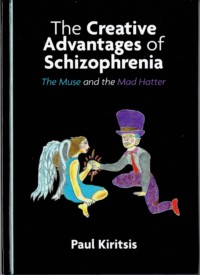Title: The Creative Advantages of Schizophrenia
Author: Paul Kiritsis
Publisher: Cambridge Scholars Publishing
ISBN: 978-1527531659
Pages: 145
Genre: Non-Fiction/Psychology
Reviewed by: Anthony Avina
Pacific Book Review
The question of whether there is a link between those with mental health disorders and an increase in creativity has been asked for many years. As the great Aristotle once said, “There is no great genius without some touch of madness.” In author Paul Kiritsis’ book The Creative Advantages of Schizophrenia, readers are given a scientific deep dive into new empirical evidence that analyzes the connection between mental health and creativity overall.
In this book, the author analyzes the history and science behind the claim of a connection between mental health and a person’s natural creativity. From the diagnosis of Schizophrenia and the treatment of the disease to the definition of creativity itself and how it can be related to those with mental illness, this book is a scientific study of creativity and mental illness like nothing else before it.
This is a very well written, factual and straight to the point read that delves into a very fascinating subject. The author’s use of statistics and facts, as well as historical records of well-known individuals who suffered from the same illness and were iconic figures in the world of creativity, made this book’s message flow and shine smoothly. In a world where mental health facts can be skewed by the world of entertainment, it was refreshing to see the subject approached from a scientific, fact-based background that showcases the realities of the illness while also focusing on the way creativity shined through for those individuals suffering from it as well.
This is a book for anyone who enjoys non-fiction reads, especially those having to deal with mental health, psychology and the impact of creativity on those with mental health disorders. As an advocate for mental health awareness and a creative person, it was fascinating to me to see the historical figures and creative icons who shared this mental health disorder and used it to fuel their own careers and historical destinies.
This is a powerful book which deserves to be read. If readers haven’t yet, they should grab their own copies of Paul Kiritsis’ book The Creative Advantages of Schizophrenia, and see how not only this illness impacts those who suffer from it, but how some are able to use aspects of the disease and turn it into creative fuel to make some of the world’s most notable works of art. It is an eye-opening read that many will not want to miss out on for themselves.


